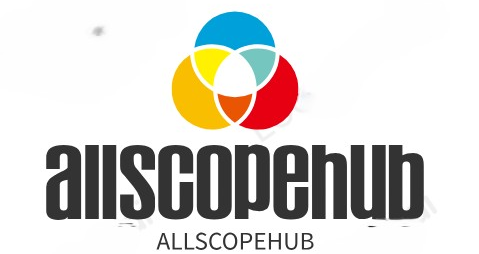In the ever-evolving world of computing, where speed, efficiency, and scalability are paramount, quantum computing stands as a transformative technology poised to reshape industries. Google’s latest innovation, the Willow quantum chip, is a groundbreaking development that underscores this potential. As part of its ambitious mission to lead in quantum research, the Willow chip represents a significant leap forward in hardware design, precision, and performance. This article delves into the technological marvel of the Willow quantum chip, its potential applications, and its implications for the future of quantum computing.
The Dawn of Quantum Computing
Traditional computing has served humanity well, but its limitations are increasingly evident in tackling complex problems such as climate modeling, drug discovery, and optimization challenges. Quantum computing, leveraging the principles of quantum mechanics, offers a paradigm shift. Instead of using classical bits that represent either 0 or 1, quantum computers use qubits, which can exist in multiple states simultaneously due to the phenomenon of superposition. This unique property, combined with entanglement and interference, enables quantum systems to perform computations that are infeasible for classical machines.
Google has been at the forefront of quantum research for years, pushing the boundaries of what’s possible. The Willow quantum chip is the latest manifestation of this effort, showcasing advancements in scalability, error correction, and qubit connectivity.
What Makes Willow Special?
The Willow quantum chip is built on Google’s expertise in superconducting qubit technology, a widely researched and promising approach to quantum computing. Here are some of the key features that set Willow apart:
- Improved Qubit Coherence: A persistent challenge in quantum computing is the fragile nature of qubits, which are prone to errors due to environmental noise. Willow demonstrates enhanced qubit coherence times, allowing computations to last longer and with greater precision.
- Advanced Error Correction: Quantum error correction is critical for building fault-tolerant quantum computers. Willow incorporates state-of-the-art error correction codes, enabling more reliable operations and paving the way for large-scale quantum systems.
- Scalability: One of the biggest hurdles in quantum computing is scaling up the number of qubits while maintaining their quality. Willow’s innovative design improves qubit connectivity, facilitating better communication between qubits and supporting more complex algorithms.
- Energy Efficiency: Compared to previous quantum processors, Willow operates with higher energy efficiency, a critical factor as the industry moves toward practical and sustainable quantum solutions.
Applications of the Willow Quantum Chip
The Willow chip’s advancements make it a promising platform for solving some of the most pressing problems in science, industry, and beyond. Here are a few areas where Willow could have a transformative impact:
- Pharmaceutical Research: Quantum computing has the potential to revolutionize drug discovery by simulating molecular interactions with unprecedented accuracy. Willow’s enhanced capabilities could accelerate the identification of novel compounds and treatments.
- Optimization Problems: Many industries, including logistics, finance, and energy, rely on solving complex optimization problems. Willow’s scalability and improved performance can enable faster and more efficient solutions.
- Cryptography and Security: While quantum computers pose a threat to traditional cryptographic methods, they also offer the opportunity to develop quantum-safe encryption techniques. Willow could play a pivotal role in advancing secure communication technologies.
- Material Science: From superconductors to advanced materials for energy storage, quantum simulations enabled by Willow could lead to breakthroughs in material design and manufacturing.
Overcoming Challenges
While the Willow quantum chip marks significant progress, challenges remain on the path to practical quantum computing. Error rates, qubit coherence, and scaling are still active areas of research. Additionally, integrating quantum systems with classical computing infrastructure requires innovative solutions. However, Google’s strides with Willow signal a clear commitment to tackling these hurdles and bringing quantum computing closer to mainstream adoption.
Google’s Vision for Quantum Computing
Google’s quantum research efforts are not limited to hardware. The company is equally focused on developing software, algorithms, and a robust ecosystem to support quantum applications. The unveiling of Willow aligns with Google’s broader vision to achieve quantum advantage—demonstrating the clear superiority of quantum systems over classical ones for certain tasks—and eventually quantum supremacy, where quantum computers outperform classical counterparts across a broad range of applications.
Furthermore, Google is committed to fostering collaboration in the quantum community. By sharing insights, tools, and resources, the company aims to accelerate progress and address shared challenges. Willow’s development highlights the importance of partnerships between academia, industry, and government in advancing quantum technology.
A Future Powered by Quantum
The Willow quantum chip is a testament to the remarkable progress being made in quantum research. Its innovative features and potential applications underscore the transformative impact quantum computing could have across diverse fields. As Google continues to push the boundaries of what’s possible, the Willow chip serves as a beacon of hope for a future where quantum computers are not just theoretical marvels but practical tools that solve real-world problems.
Quantum computing is still in its infancy, but breakthroughs like Willow bring us closer to realizing its full potential. As researchers, engineers, and visionaries work together to overcome the remaining challenges, the possibilities seem boundless. The Willow quantum chip isn’t just a step forward for Google; it’s a leap for humanity in harnessing the power of quantum mechanics to create a better, more efficient, and more innovative world.



